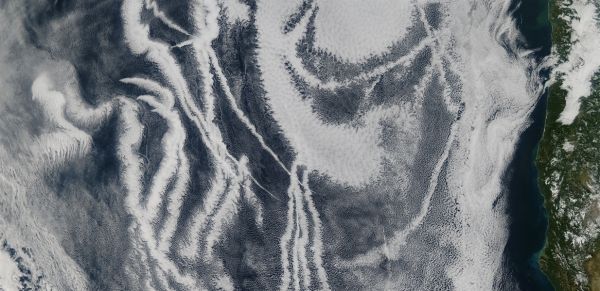Low hanging clouds that hover over large areas of the world’s oceans exert a cooling influence on climate by reflecting solar radiation back to space. Some have suggested that humans could offset the impacts of global warming by artificially seeding these clouds with aerosol particles to brighten them and increase their reflectivity.
To better understand the formation and reflectivity of marine clouds, researchers often study the exhaust plumes of particles from ship smoke stacks which, when they enter clouds, form long, linear cloud tracks across the oceans. Now, new research by scientists from NOAA and CIRES finds that studies that analyze these ship-track clouds may have strongly overestimated the effect of particles on natural clouds, a finding that has implications for a climate intervention strategy known as marine cloud brightening. Their work was published in the journal Science.
“Ship track clouds are a good example of how aerosol effects on clouds are traditionally thought of, and of how they are still represented in most climate models,” said lead author Franziska Glassmeier, a former CIRES scientist now with the Technical University of Delft. The problem, she said, is that these clouds are simply too short-lived to provide a good model for how most marine clouds work.
Continue reading at NOAA Research
Image via NOAA Research


